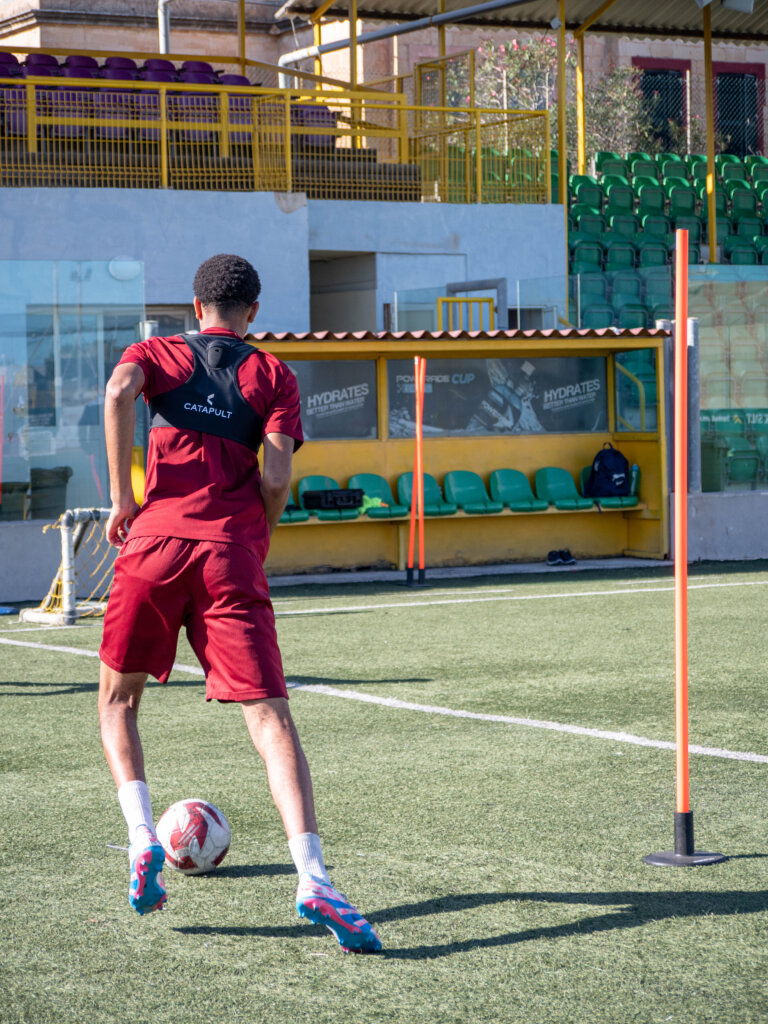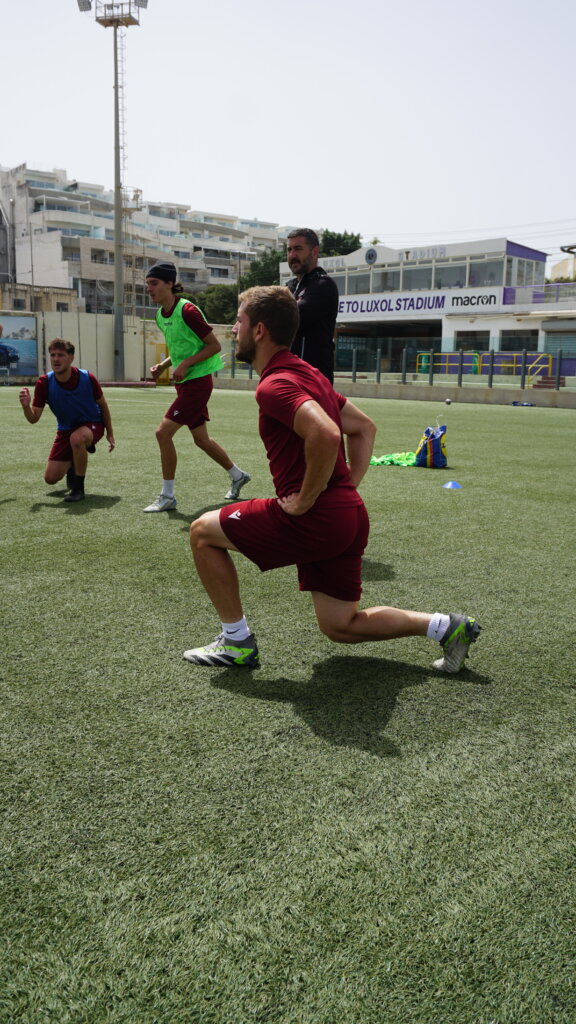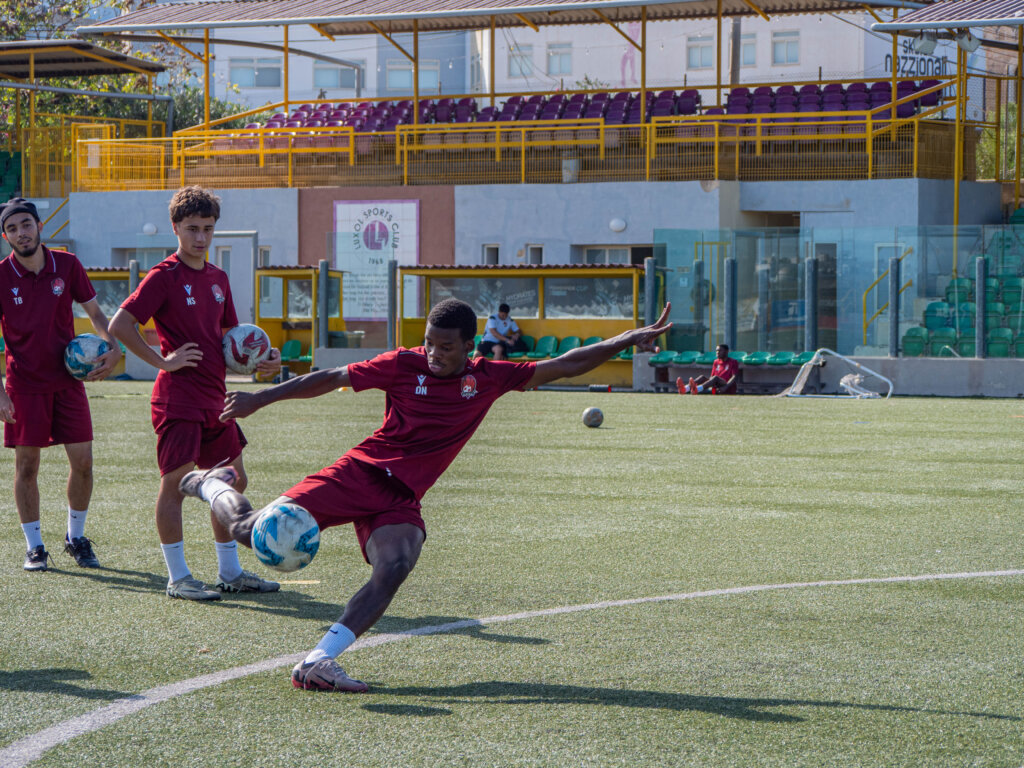Progress in football is not based solely on team training. If you want to become a better player, it's crucial to supplement these sessions with well-structured individual training.
These allow you to refine your technical, physical, and mental skills, while also addressing your own specific needs.
This article will guide you step-by-step to maximise the effectiveness of your individual training sessions, whether you're a keen amateur player or an aspiring professional.
Summary
Assessing and planning your individual training
Diagnosis of your current level
Before defining a training plan, it's essential to know where you stand.
This involves both technical and physical assessment:
- Technical tests: Test your ball control with driving, passing and shooting exercises. For example:
- Slalom between studs to test precision and control.
- Pass against a wall to estimate your accuracy.
- Shooting sessions with targets to fine-tune your finishes.
- Physical tests: Test your speed, endurance and strength. Try timed sprints for speed, or a 'beep test' for endurance.
Setting SMART objectives
Once you have identified your strengths and weaknesses, define clear and achievable objectives:
- Specific: (e.g. "Improve my passing accuracy from 85 % to 90 %").
- Measurable: Track concrete indicators such as the number of successful passes.
- Achievable: Realistic and in line with your current level.
- Time: Give yourself a precise deadline, like 4 weeks.
Draw up a personalised training schedule
Create a programme to suit your schedule and your needs:
- Decide on the frequency (2 to 4 sessions per week depending on your availability).
- Structure your weeks with load phases (high intensity) and recovery phases.
Targeted technical work
Ball control and handling
To improve these skills:
- Practice slalom exercises between studs to reinforce your control.
- Work on your amortised on passes thrown from different heights.
- Exercise rapid changes of direction with the ball to simulate match situations.
Accurate passing and shooting
- Use a wall as a partner: juggle short and long passes.
- Set up targets in the goal and try to get your shots on target.
- Work on trajectories (flat foot versus outside foot).
Dribbling under pressure
Perform 1-on-1 drills or dribble under pressure, simulating a defender following your trajectory. These exercises will boost your confidence in match situations.

Developing your physical qualities
Speed and explosiveness
- Plyometric exercises like jumping or leaping.
- Short sprints with maximum intensity.
- Work on your synchronisation with rhythm scales.
Football-specific endurance
Concentrate on exercises that closely resemble the efforts required on the pitch:
- Intervals Alternate fast runs with recovery time.
- Fartlek Vary the intensity of your runs.
- Simulate mini-matches to reproduce the real environment.
Strength and injury prevention
- Add some muscle strengthening : weight training, squats and lunges.
- Add some proprioceptive work to stabilise your joints.

Incorporate a tactical and mental approach into your individual training sessions
Reading the game and making decisions
- Watch matches to decode tactical patterns.
- Take part in reduced games with precise objectives to encourage rapid decision-making.
Visualisation and mental routines
- Use techniques such as visualisation to prepare yourself mentally.
- Set up pre-match routines to channel stress.
Adapting training to real-life situations
Simulate match scenarios to react better on the pitch: playing under pressure, attacking outnumbered, etc.
Monitoring, feedback and adjustments
Self-assessment and monitoring
Hold a training booklet to track your progress. Make a note of what went well and what you need to improve.
Use of tools
- Invest in a connected watch to analyse your performance.
- Try a training app or work with a coach over video to get feedback on how you're doing.
Adjusting the plan according to your progress
Be flexible and adapt your plan according to your results and how you feel. If you feel tired, reduce the intensity to avoid injury.
Nutrition, recovery and healthy living
Power supply:
Eat balanced meals adapted to the needs of an athlete carbohydrates for energy, proteins for recovery and overall nutrition.
Sleep and active recovery
- Aim for at least 8 hours' sleep.
- Incorporate techniques such as stretching or yoga sessions to relax the muscles.
Pain management
Listen to your body: treat minor aches and pains quickly to prevent them becoming chronic.
Example of typical programmes
Weekly programme for amateur players
- Monday: Strengthening muscles and passing.
- Wednesday: Specific endurance with intervals.
- Friday: High-intensity shooting and slalom.
- Sunday: Match or simulation of real-life situations.
Intensive session to work on typing
- Warm-up (10 min)
- Slalom (15 min)
- Target shooting (20 min)
- Reduced play, pressure shots (15 min)
4-week cycle for explosiveness
- Weeks 1-2: Focus on plyometrics and speed.
- Weeks 3-4: Intervals and fatigue work.

Conclusion
Individual training is an essential key to progress in football. By following these tips, you'll give yourself the best chance of achieving your goals.
Start by assessing your strengths and weaknesses, draw up a personalised plan and remain consistent. With rigour and motivation, the results will follow.

